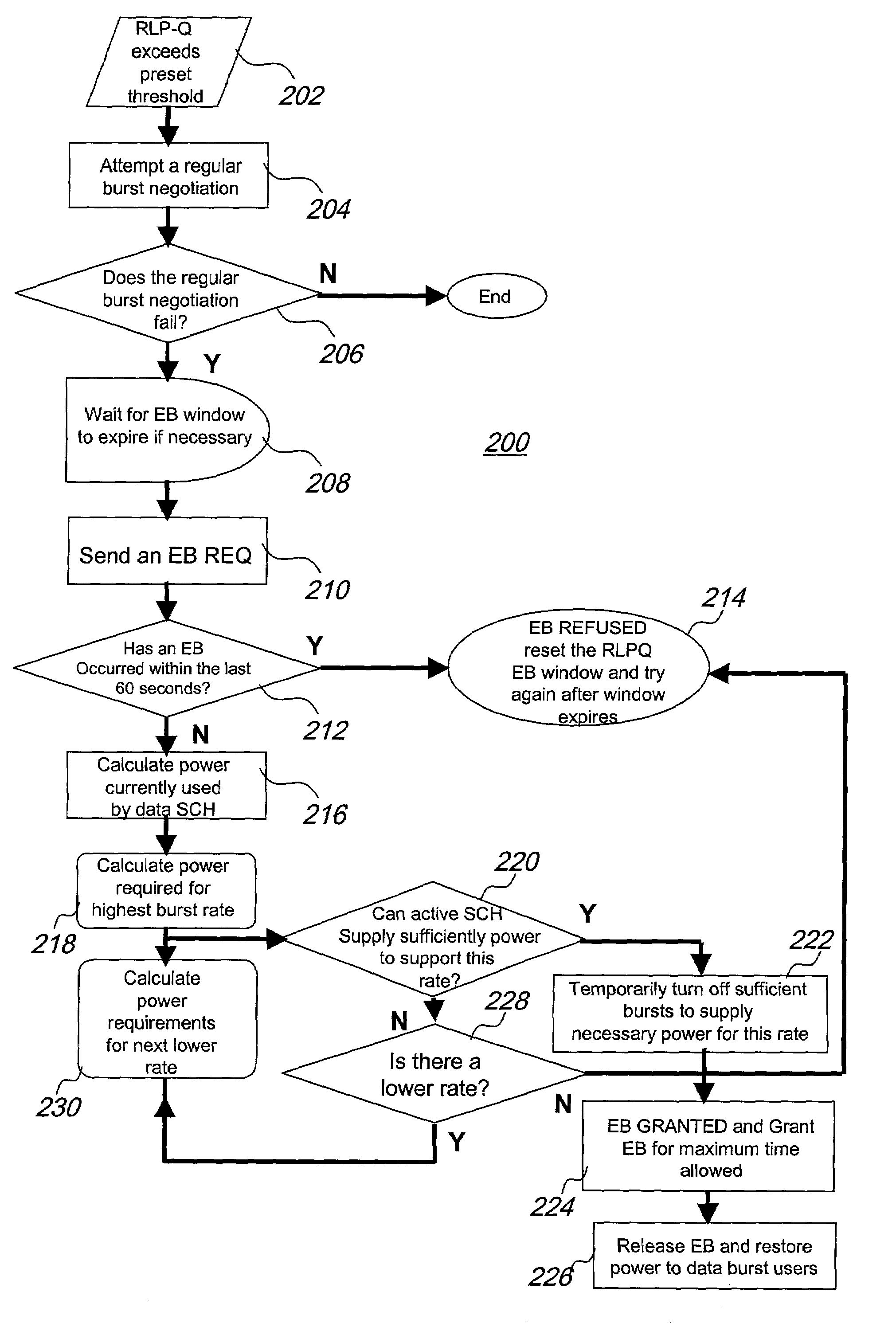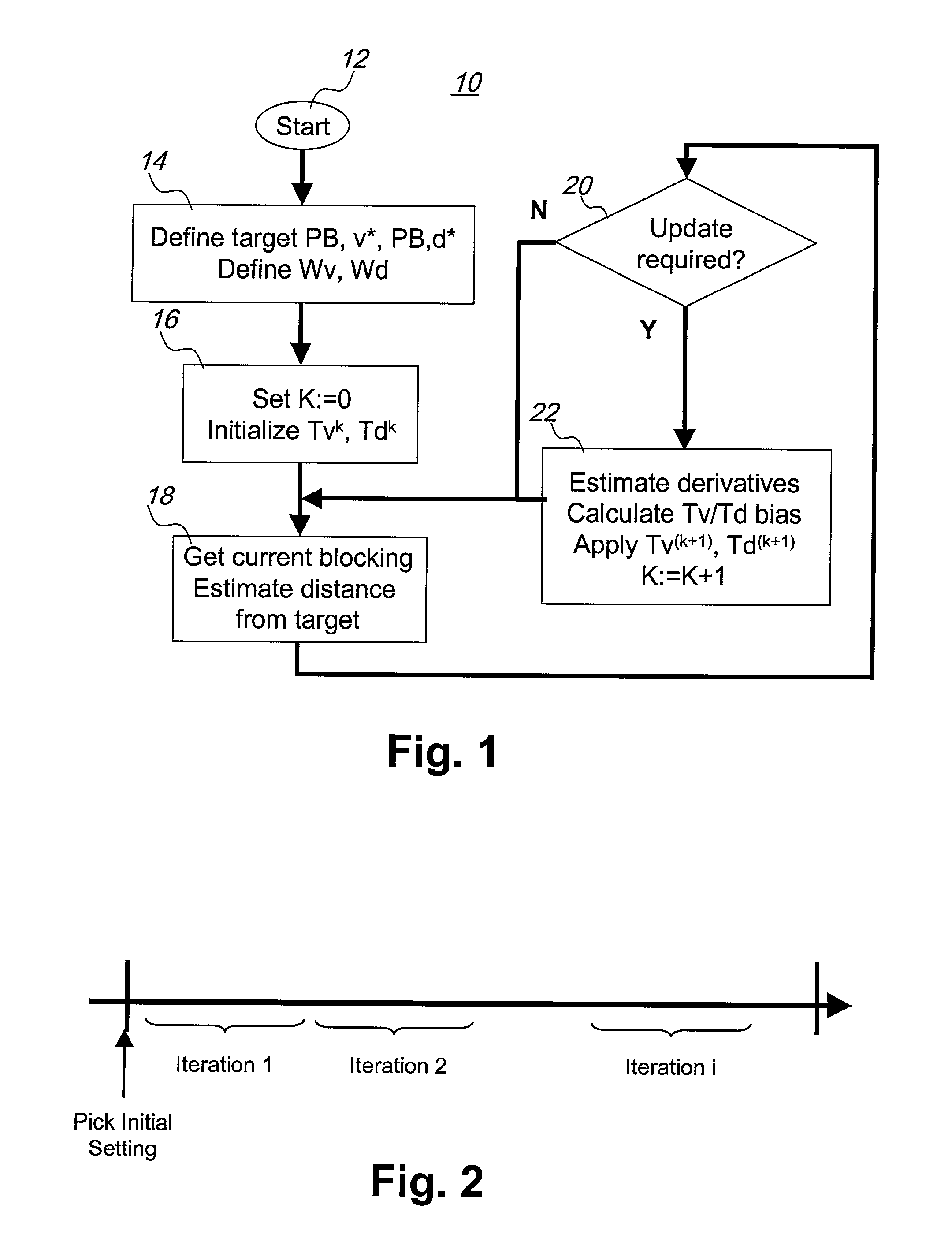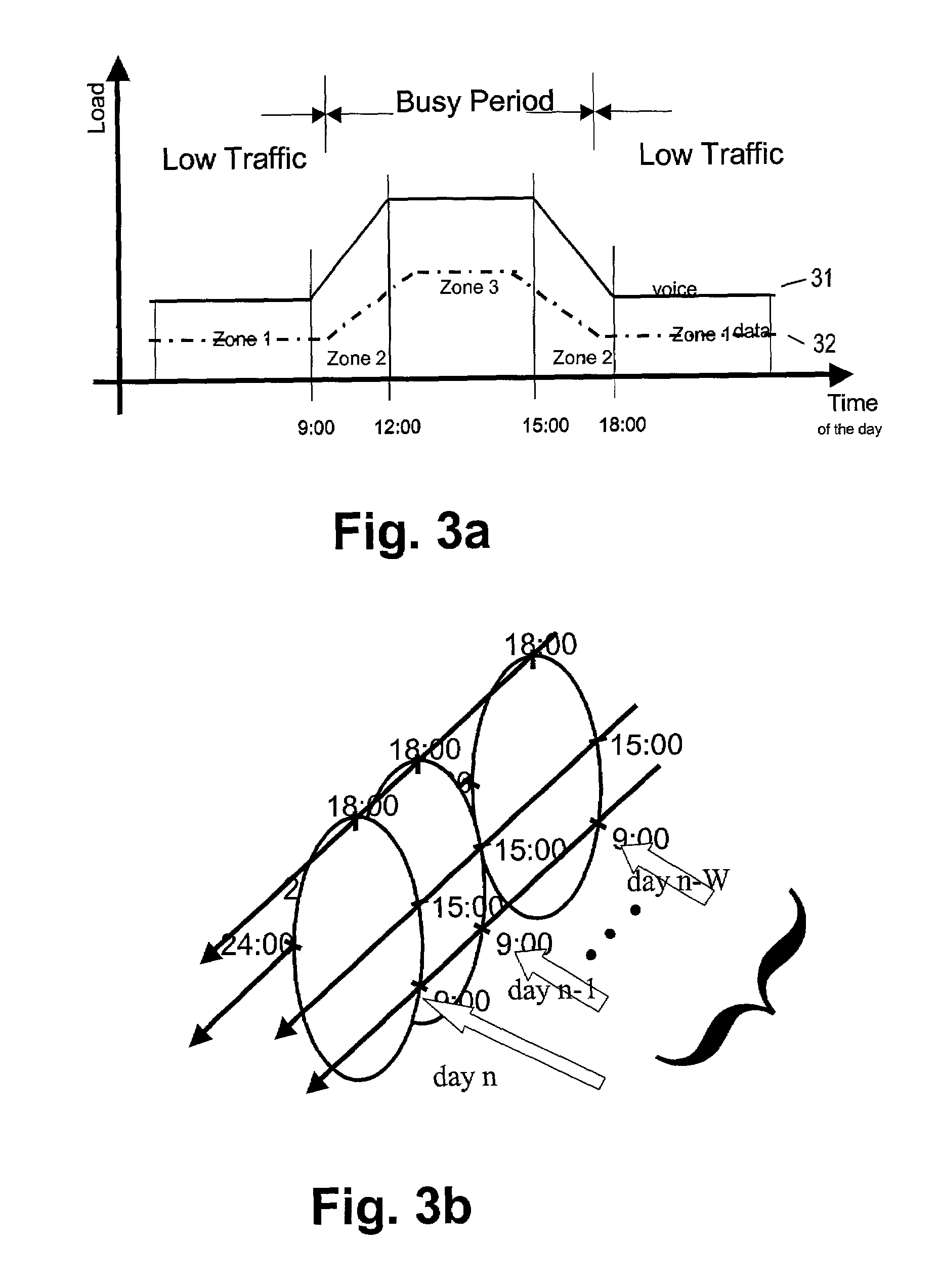Method of radio resource management for integrated voice and data CDMA networks
a radio resource management and integrated voice technology, applied in data switching networks, frequency-division multiplexes, instruments, etc., can solve the problems of limited cdma system, inability to allocate the required resources all the time, and inability to provide optimal capacity or throughput for mobile users, so as to achieve the effect of improving network performan
- Summary
- Abstract
- Description
- Claims
- Application Information
AI Technical Summary
Benefits of technology
Problems solved by technology
Method used
Image
Examples
Embodiment Construction
[0027]In this section we present an advanced scheme for improving on resource sharing as provided by the dynamic resource sharing method. This new scheme is directly applicable but not limited to cdma2000 networks. This scheme builds on the dynamic sharing method described in the previous section and attempt alleviate its shortcomings by including the following two mechanisms:[0028]The network can adapt its resource partitioning to accommodate varying traffic conditions, and[0029]The resource partitioning should take into consideration the operator's service prioritization.
[0030]As was noticed from the background material, an optimal resource partition is only optimal for the specific traffic conditions used to arrive at this partition. When traffic varies throughout the day or from one day to the next, the network performance may become unacceptable even with the existence of unused portions of resources. In other words, underutilization of resources may take place while there exis...
PUM
 Login to View More
Login to View More Abstract
Description
Claims
Application Information
 Login to View More
Login to View More - R&D
- Intellectual Property
- Life Sciences
- Materials
- Tech Scout
- Unparalleled Data Quality
- Higher Quality Content
- 60% Fewer Hallucinations
Browse by: Latest US Patents, China's latest patents, Technical Efficacy Thesaurus, Application Domain, Technology Topic, Popular Technical Reports.
© 2025 PatSnap. All rights reserved.Legal|Privacy policy|Modern Slavery Act Transparency Statement|Sitemap|About US| Contact US: help@patsnap.com



